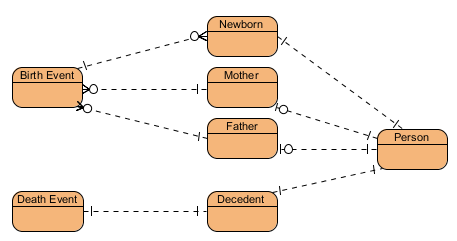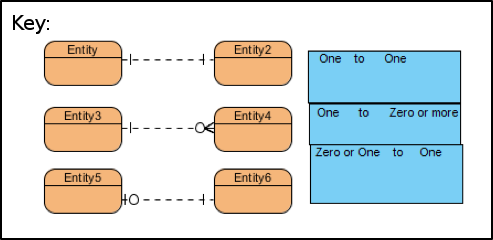Overview
Before being able to define what systems are required to support the CRVS business need, it is necessary to understand what information requirements exist i.e. what data is collected, stored and put to use within the existing CRVS system. At the highest level this means understanding what logical entities exist within the CRVS business domain and the relationships between them. Together with the Data Dictionary, they form the basis of the data architecture which, when detailed at the lowest level, will later define the CRVS database design.
Steps:
1
Develop a target data model using the Generic Information Modelling Guide.
The diagram below shows at a conceptual level the informational relationships between the vital events of birth and death and the person, who over a lifetime inhabits various roles such as a newborn, mother, father and decedent. Each event and each role is associated with a set of data.

Conceptual Data Model

2
Consider the below questions to better understand the information requirements:
- Where will master data be stored?
- How will each data entity be used by each CRVS actor and process?
- How and where will each data entity be created, stored, transported and reported?
- What data transformation is required to support the information exchange between solution components?
3
Review and update the Data Dictionary Template to reflect the country’s specific CRVS data requirements.






